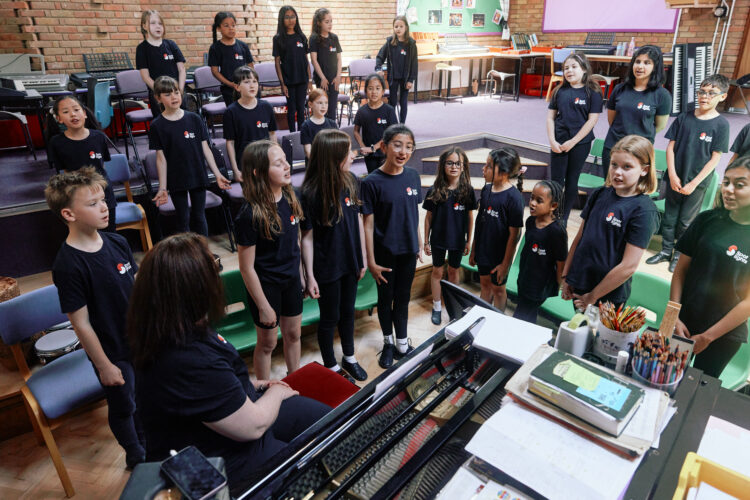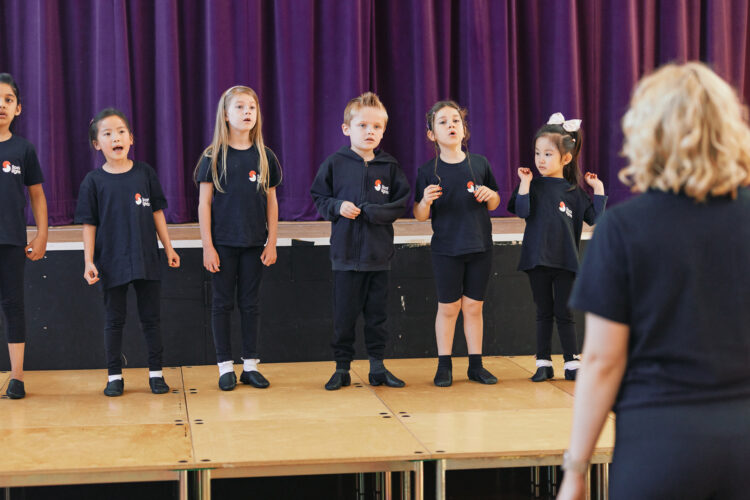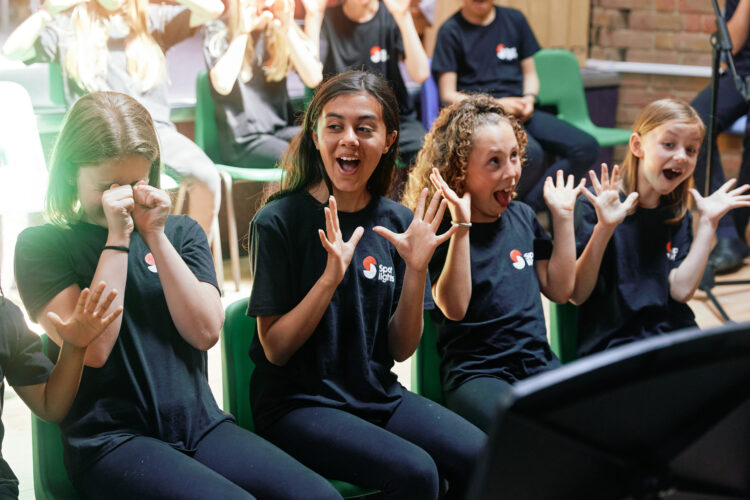
The Benefits of Dance for Young Children
Lights, music, and movement—dance is a creative outlet that offers far more than just fun for young children. From waltzing their way to better cardiovascular health to leaping toward improved self-esteem, the benefits of dance are as diverse as the steps themselves.
For parents, introducing their child to dance classes can unlock a treasure chest of physical, mental, and emotional advantages, all while fostering skills that can last a lifetime.
At Spotlights Musical Theatre School, where the magic of performance meets the discipline of dance, children learn more than just fancy footwork. They discover how to twirl through life’s challenges with grace, rhythm, and confidence. Let’s explore why hitting the dance floor at an early age can set the stage for your child’s lifelong success.
7 Benefits of Dance for Young Children
1. Physical Benefits: Keeping Tiny Feet Moving
Dance is an excellent way to boost a child’s physical health, especially in their early years when their bodies are growing rapidly. Unlike many forms of physical activity that focus on repetitive movements, dance classes incorporate variety and creativity, which helps engage different muscle groups.
Taking dance classes improves cardiovascular health, strengthens muscles, and enhances flexibility. The dynamic nature of dance moves, from the precise taps of tap dancing to the fluid sequences of modern dance, helps improve balance, coordination, and overall fitness. Research even shows that regular physical activity like dance reduces the risk of childhood obesity and builds a foundation for healthy habits in everyday lives.
For children with endless energy, the dance studio becomes a playground where movement meets purpose. Not only does it channel their enthusiasm, but it also helps with spatial awareness, an essential skill for understanding their surroundings and navigating the world safely.
2. Mental Health and Cognitive Benefits: Dancing Minds
It’s no secret that dance is good for the soul, but it’s also a workout for the brain. Studies suggest that creative activities like dance can improve cognitive development in young children. As your child learns complex choreography or experiments with improvisation, they sharpen problem-solving skills, memory, and focus.
Additionally, dance is a huge benefit for mental health. The uplifting combination of music and movement releases endorphins, reducing stress and boosting mood. It’s hard to feel anything but joy when a favourite dance style turns into a mini performance! For children, this translates into better emotional regulation and a more positive outlook on life.
You Might Like: 10 Things to Look For In a Theatre School for Kids
3. Emotional Benefits: Building Self-Esteem Through Movement
Every twirl and leap on the dance floor helps build self-confidence. For young dancers, each new skill mastered is a victory, fostering a sense of achievement. Dance schools provide a safe space for children to experiment with movement, make mistakes, and grow—essential experiences for boosting self-esteem.
Moreover, dance is a natural form of self-expression. Whether your child feels shy or exuberant, dance offers them the freedom to communicate emotions they may not yet have the words for. This emotional outlet is invaluable for developing emotional health and resilience.
Partner dance styles, like ballroom or group dancing, introduce an added layer of emotional benefits. Learning to move in harmony with others requires trust and teamwork, skills that translate directly into their everyday lives.
4. Social Benefits: Making New Friends on the Dance Floor
Dance is as much a social activity as it is a physical one. By participating in group dancing or dance lessons, children gain opportunities for meaningful social interaction. Working together to learn choreography, practicing dance moves in pairs, or cheering on classmates during a recital teaches essential social skills like collaboration, patience, and empathy.
Dance schools also foster a sense of belonging. Children often form lasting friendships as they share the joy (and sometimes the challenge) of learning new routines. These friendships create a supportive network that helps children feel connected and valued.
The social benefits of taking dance classes extend beyond the studio. Confident in their abilities, children are more likely to participate in group activities at school, navigate social situations with ease, and embrace new opportunities with open arms.
Read More: How Does Dance Improve Social Skills?
5. Life Skills That Go Beyond the Dance Studio
Dance equips children with valuable life skills that prepare them for challenges both on and off the stage. The discipline required to attend regular classes and practice routines builds time management and a strong work ethic. The creativity dance nurtures helps children think outside the box, a skill that will serve them in countless areas of life.
Dance also enhances body language awareness. A child who understands how to carry themselves gracefully exudes confidence and poise. These subtle yet powerful qualities can make a world of difference, whether they’re delivering a presentation at school or performing in a theatre production.
6. Creativity and Self-Expression: Where Art Meets Movement
The beauty of dance lies in its ability to combine physical movement with artistic expression. Children who dance are exposed to many forms of creativity, from interpreting music through movement to creating their own routines.
At Spotlights, children are encouraged to explore their unique styles, whether it’s the rhythm of street dancing or the emotive flow of modern dance. The result? A creative outlet that fuels their imagination and gives them the confidence to shine.
7. Early Age, Lifelong Benefits
Introducing children to dance at an early age yields obvious benefits that ripple throughout their lives. Beyond the physical and mental well-being it promotes, dance teaches children to persevere, adapt, and embrace challenges.
Dance lessons can even spark a lifelong passion for the performing arts. Many children at Spotlights go on to pursue careers in musical theatre or simply keep dancing as a joyful hobby. Whatever path they choose, the foundation laid in the dance studio remains a source of strength and inspiration.
Find Out More: 10 Benefits of Musical Theatre for Kids
Ready to Find the Right Dance Classes for Your Child?
Choosing the best musical theatre school is an important step in nurturing your child’s love for dance. At Spotlights Musical Theatre School, children are taught by passionate instructors who understand the unique needs of young dancers. With a focus on building self-confidence, fostering creativity, and celebrating each child’s individuality, Spotlights offers an environment where every child can thrive.
Our range of weekly classes and holiday workshops cater to children of all ages and skill levels, making it an inclusive and nurturing environment for all.
Book your free trial or get in touch for more information!
Benefits of Dance FAQs
What is the best age for a child to start dance classes?
Children can begin dance classes as early as three years old, depending on the class and dance school. At this age, classes focus on basic movements, coordination, and having fun. For slightly older children, more structured lessons in specific dance styles like tap dancing or modern dance can help them develop foundational skills while still keeping the experience enjoyable and age-appropriate.
What should my child wear to their first dance class?
The requirements vary depending on the dance style and school, but comfortable clothing that allows for free movement is a great start. Many schools, including Spotlights, may recommend specific attire such as dance shoes, leotards, or loose-fitting clothing. Check with your chosen school for their dress code to ensure your child is ready to hit the dance floor.
Does my child need previous experience to join a dance class?
Not at all! Most dance classes for young children are designed for beginners. They focus on introducing children to basic dance moves, rhythm, and coordination in a supportive environment. Whether your child is a natural mover or new to dancing, they’ll be guided to develop their skills and confidence at their own pace.






